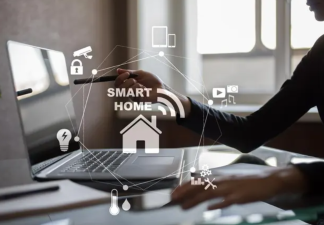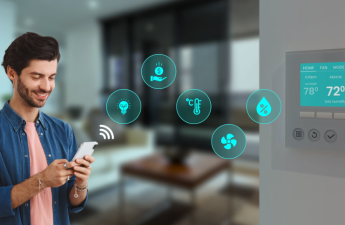With the deep integration of the Internet of Things, artificial intelligence and the home furnishing industry, smart home decoration in 2025 is ushering in an unprecedented change. From the popularization of whole-house intelligence to the deep application of AI technology, from the innovation of scenario-based services to the upgrade of green energy saving, smart home decoration is evolving from single-device intelligence to systematization, humanization and ecology.
With the deep integration of the Internet of Things, artificial intelligence and the home furnishing industry, smart home decoration in 2025 is ushering in an unprecedented change. From the popularization of whole-house intelligence to the deep application of AI technology, from the innovation of scenario-based services to the upgrade of green energy saving, smart home decoration is evolving from single-device intelligence to systematization, humanization and ecology.

Whole-house intelligence: from "single-point intelligence" to "system symbiosis"
Whole-house interconnection: In 2025, home products with AI interactive functions will cover more than 70% of the mid-to-high-end market. Through unified protocols and standards, lighting, security, audio and video, environmental control and other equipment can achieve seamless linkage to build a "people-object-field" collaborative smart ecology.
Non-sensing interaction: Multimodal interaction technologies such as voice, gestures, and eye movements are mature, and users can control the whole-house equipment through natural movements. For example, smart curtains automatically open and close according to light, and air conditioners automatically adjust modes according to user body temperature and indoor and outdoor environment.
Edge computing: Localized AI chips compress device response delay to less than 50ms, and scenarios such as security and health monitoring can achieve real-time decision-making, reduce cloud dependence, and improve privacy and security.
AI deep integration: from "tool" to "steward"
Autonomous learning: The intelligent system automatically optimizes home scenes through user behavior data analysis. For example, smart refrigerators generate recipes based on eating habits, and sweeping robots adjust cleaning modes according to floor materials.
Holographic butler: Digital human butlers provide 24-hour active services through 3D projection or smart terminals. For example, the weather is automatically broadcast and schedules are reminded in the early morning, and the temperature and humidity of the bedroom are adjusted according to the sleep stage at night.
Emotional computing: AI recognizes user emotions through voice and expression, and links home appliances to create a corresponding atmosphere. If the user is detected to be tired, soothing music is automatically played and the lights are dimmed.

Scenario-based services: from "function superposition" to "experience reconstruction"
Scenario packages: Enterprises launch standardized solutions covering scenarios such as "audio and video entertainment, healthy sleep, and home office". For example, one-click switching to "cinema mode" automatically closes the curtains, dims the lights, and turns on the projector.
Modular customization: Users can combine smart modules like "building blocks". For example, the study room is divided into a fitness area by a movable partition, and the balcony is embedded with a liftable desk to meet personalized needs.
Green energy saving: from "passive response" to "active optimization"
Energy management: Smart meters, photovoltaic systems and energy storage equipment are linked to achieving self-generation and self-use of household energy. For example, new energy vehicles are automatically charged when the sun is sufficient, and low-priced valley electricity is used at night.
Material innovation: The market share of furniture made of renewable materials is expected to reach 31%, and the use rate of low-VOC coatings will increase to 58%. For example, mycelium materials are used to make environmentally friendly sound insulation boards, and photocatalytic coatings are used to decompose formaldehyde.
Intelligent control: Environmental sensors are combined with AI algorithms to dynamically adjust the home microclimate. For example, the dehumidification mode is automatically turned on in the rainy season, and the waste heat of floor heating is used to preheat the water heater in winter.
With the vigorous development of the smart home market, consumer pressure has gradually emerged. However, market changes and technological innovation have also brought new breakthroughs. In 2025, we are expected to witness the smart home industry successfully respond to consumer pressure through innovation and optimization, and achieve continued prosperity in the industry.

